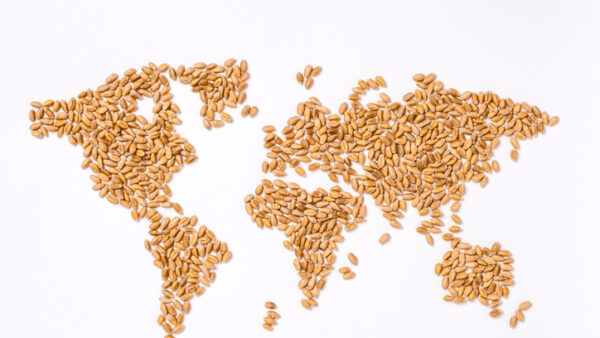The Global Crop Diversity Trust explores the challenges with global food production as the population keeps growing.
World population just surpassed the big round number of 7,000,000,000. Mankind reached its first billion just as the 19th century got underway. That feat of fecundity required eons. It took us just 12 years, however, to tack on the last billion. We’re definitely on a roll.
Predictably, the latest milestone is passing by as a one-day news event. As long as I can remember, the media’s cursory cov- erage of population growth has been coupled with references to Malthus, who in 1798 famously asserted that population would inevitably outstrip food production. That was before the first billion.
Could the world feed so many people? The answer was obviously ‘yes.’
A qualified ‘yes,’ however. Today’s seven billion could never survive on the amount of food grown in Malthus’s day. It is increased productivity, courtesy of cropland expansion and a series of farming ‘revolutions,’ that has enabled population growth. Yet, despite productivity gains sufficient to enable the world to add another six billion, a billion people today are chronically undernourished. Hungry.
It has been fashionable to argue that the problem is not production but poverty. Or distribution. Or policies. Or people’s eating habits. If only people were not poor, they could (obviously) buy their way out of hunger. If we just distributed the food we had more equitably, if we had better policies, if only more people were vegetarians, there would be no hunger.
A qualified ‘yes,’ however. Today’s seven billion could never survive on the amount of food grown in Malthus’s day. It is increased productivity, courtesy of cropland expansion and a series of farming ‘revolutions,’ that has enabled population growth. Yet, despite productivity gains sufficient to enable the world to add another six billion, a billion people today are chronically undernourished. Hungry.
It has been fashionable to argue that the problem is not production but poverty. Or distribution. Or policies. Or people’s eating habits. If only people were not poor, they could (obviously) buy their way out of hunger. If we just distributed the food we had more equitably, if we had better policies, if only more people were vegetarians, there would be no hunger.
On paper, these arguments are almost irrefutable. I’ve just never quite been able to shake the feeling that none have much of a chance of leaping off the page and into practice soon enough to feed the last billion or the next. Indeed, income disparities are widening, people are eating more meat. And policies? Oh, forget it.
The arguments will continue to be put forth as if they were plans, and they will continue to be valid on paper and up to a point. That point will be reached when real productivity constraints collide with real demand for food, arising from population growth and economic development.
In capitals around the world and in their development agencies, I detect a shift. They sense that production itself is becoming a problem. It doesn’t mean that poverty isn’t a huge factor. It doesn’t mean that they have started to blame the last billion for the woes of the world—after all the seventh billion, by definition, is composed of children aged twelve and under. It also doesn’t mean that income disparities, food distribution, waste, and eating habits are not important issues to address. But it does mean that production matters.
Global food production is still increasing, but yield increases are slowing noticeably. Annual yield increases above two percent for major cereals, enjoyed until recently, have now fallen substantially below that mark.
Yields of rice and wheat no longer keep up with population growth. This can’t be a good sign.
| Global Yield Growth Rates (% per year) | ||
|
Crop |
1961-1990 |
1990-2007 |
|
Corn (maize) |
2.20 |
1.77 |
|
Wheat |
2.95 |
0.52 |
|
Rice |
2.19 |
0.96 |
| Source: Alston, Beddow and Pardey (2010) | ||
It is increased productivity, courtesy of cropland expansion and a series of farming ‘revolutions,’ that has enabled population growth.
Revolution of the 1960s and 1970s was fueled by investments in research, research with astronomical rates of return that paid handsomely in increased food production.
In hindsight, most governments rested on these successes, not appreciating that activities such as plant breeding are not ‘one-off.’ Yields stagnate unless you replace current varieties with more productive varieties. It’s a simple truth. Failure to fund research in the 1990s is being felt now. The next decade or two will be rough and volatile. Climate variability, physical constraints and the lack of innovation in the pipeline will see to that. Genebanks are conserving hundreds of thousands of unique samples, many of which have not yet been screened to reveal the very traits that could be employed to help agriculture adapt to climate change and become more productive: heat resistance, drought tolerance, disease and pest resistance, productivity in low nutrient situations. Can anyone doubt their importance? The world will add yet another billion in the next 12 years. Interestingly, that’s about the length of time it takes for a plant breeder to develop a new crop variety and get it to farmers. Planning for productivity is so much more pleasing than waiting for plague and pestilence.
Editor’s Note: Reprinted with permission from the Global Crop Diversity Trust.













